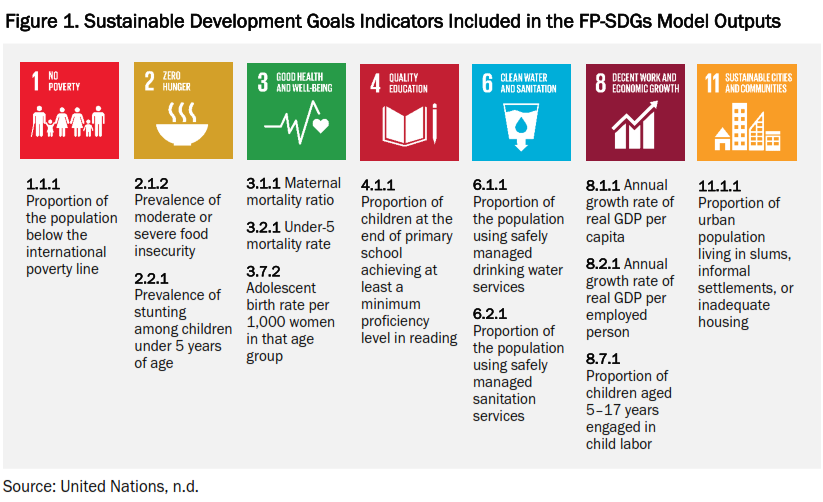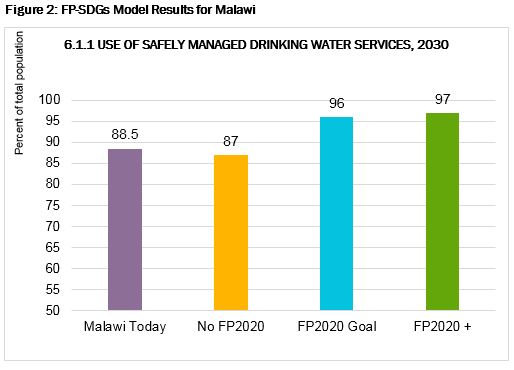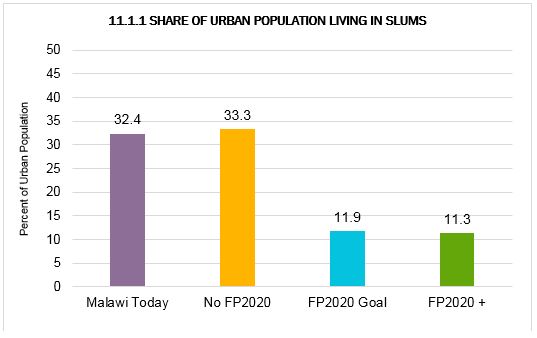-
Family Planning Can Mean Big Progress for the Sustainable Development Goals—And Here’s How

As the UN High-Level Forum on Sustainable Development continues this week, member states and civil society are taking a hard look at countries’ progress toward securing safe drinking water, sanitation, and adequate housing. Achieving these and the other Sustainable Development Goals (SDGs) requires recognizing the synergies among them—including the role that reproductive health and family planning can play. You may ask, “Why does family planning matter for the SDGs not related to health?” The answer is that it is one of the most cost-effective investments for achieving the SDGs. Increasing access to family planning provides sweeping social, economic, and environmental benefits for every dollar spent.
But despite the myriad evidence on the overall benefits of family planning, many nations continue to lag behind on their commitments to invest in contraceptive services, information, and supplies. Unsurprisingly, the expansive nature of the 17 different SDGs poses a challenge for prioritizing development efforts, resulting in stiff competition between sectors for scarce resources. Investing in family planning, however, could free up resources for other sectors—but only if decision-makers have country-level evidence that shows exactly how family planning can help achieve other SDGs. A new, evidence-based advocacy model, developed by the Health Policy Plus (HP+) project, seeks to fill that critical gap.
Investing in Family Planning Can Increase Access to Safe Drinking Water and Housing
Funded by USAID, the Family Planning-Sustainable Development Goals (FP-SDGs) Model projects how different levels of family planning use—directly and indirectly through their impact on demographics—can affect a country’s ability to make progress toward the SDGs by 2030 and 2050. The open-source model covers a wide range of SDGs and their indicators, including water, sanitation, and housing under discussion at this week’s forum (see Figure 1).

For example, large family sizes and rapid population growth can negatively affect both the availability—in terms of absolute supply—and the quality of safe drinking water. Research has shown that family sizes tend to decline when couples who want fewer children have access to voluntary, affordable, and effective family planning methods. By averting unintended pregnancies, the use of family planning can prevent crowded conditions that can strain water supplies and compromise water quality, such as by increasing microbial pollution from fecal contamination. Giving families the tools to choose how many children to have, and when to have them, frees up household resources, enabling parents to invest in and repair household water systems or pay for routine services.
Moreover, rapid population growth may amplify urban challenges by straining municipal government systems, including the ability of city authorities to provide adequate housing and infrastructure for all residents. The limited quantity of adequate accommodations factors may push individuals to live in slum or squatter settlements. Achieving desired family sizes through contraception can help decrease stress on urban housing systems. Just as with water supply, freeing up household resources through smaller family sizes increases parents’ ability to secure improved housing.
The FP-SDGs Model provides the evidence—all too often lacking—by measuring the extent to which family planning can improve conditions at the country level. Take, for example, Malawi. When the FP-SDGs Model was applied, it showed that if the country failed to meet its Family Planning 2020 (FP2020) commitment by 2030, the state of Malawi’s drinking water and housing systems would worsen (see Figure 2). However, if the country put in place the investments and policies needed to reach or even exceed its FP2020 goals, the country could see a 10-11 percent increase in the use of safely managed drinking water services, and a 65 percent improvement in housing conditions, in just over a decade.


Showcasing Synergies for Sustainable Development
Results that show the synergies between SDGs and the multi-sectoral benefits of contraceptive use can provide the country-specific evidence needed to generate broad-based support for voluntary, rights-based family planning, including:
- Increasing financial investments in family planning programs;
- Revising or updating family planning policies and strategies, and integrating family planning components in the policies and strategies of other sectors; and
- Bolstering policy and program implementation.
As the high-level political forum enters its final days, and more countries than ever before are voluntarily reviewing their progress toward the SDGs, countries should consider how addressing interlinkages between the SDGs can accelerate progress. The lack of methods for analyzing these contributions has been a major barrier to these efforts, but new models like FP-SDGs are an important step towards a more integrated and efficient approach to achieving a more sustainable world.
The FP-SDGs Model is free and available for download and use here.
Kaja Jurczynska, MSc, is a demographer and technical advisor for family planning at Palladium.
Suzy Sacher, MPH, is a manager in Palladium’s Health Practice and a technical advisor on the Health Policy Plus project.
Scott Moreland, PhD, is a senior health economist specializing economic-demographic modeling at Palladium.
Sources: Family Planning 2020, Guttmacher, Health Policy Plus, Population Council, United Nations Sustainable Development Knowledge Platform
Photo Credit: Malawian children at a water pump, October 2005, courtesy of Seward Inc.
Topics: demography, development, economics, family planning, featured, global health, Guest Contributor, Malawi, population, SDGs
 A Publication of the Stimson Center.
A Publication of the Stimson Center.






